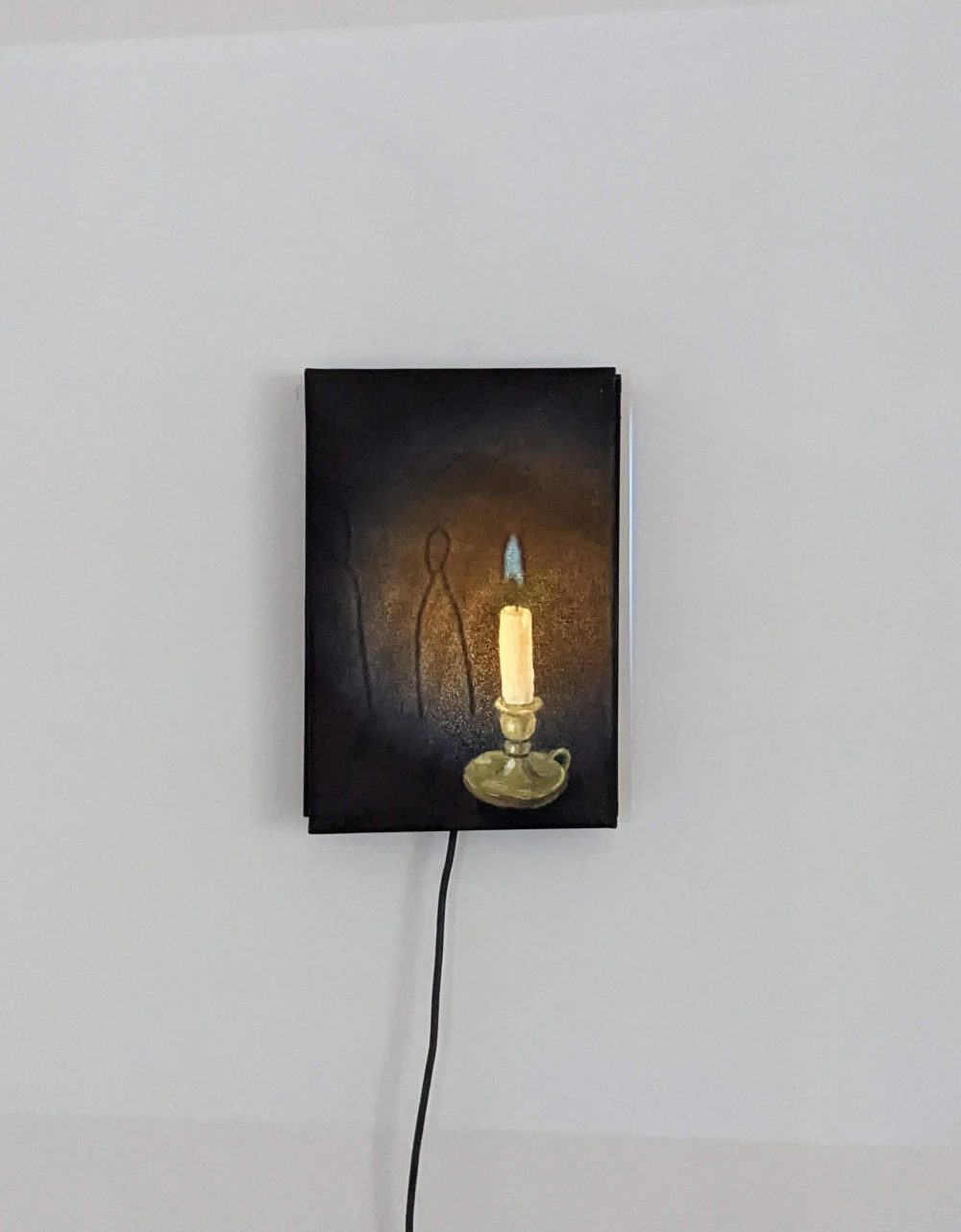
reconstruction
reconstruction ponders the legacy of art, both physical and digital and the marks we leave on this world.
When you walk up to reconstruction you are presented with a small (20cm x 30cm) oil painting on canvas of an unlit candle against a dark backdrop. A sign next to the painting reads, “take a step back, and touch the wick.” Against all instincts, you touch the wick of the candle and it ignites. The flame flickers and illuminates the wall behind it, where animated drawings come alive. As quick as it came, the candle is extinguished and the scene is gone. If you’re among the more curious you touch it again – perhaps a new scene appears, or the same scene again.
This piece was made as part of the final exhibition for my residency with Digital Arts Studios in Belfast, Northern Ireland as one of their Future Labs Residents. During this residency, we explored new technologies and techniques, and so when conceptualizing my work for the final exhibiiton I considered which of those new avenues I wanted to explore.
I landed on projection mapping, and wanted to create an interactive element to it. My first idea was an interactive painting, but we were concerned about how shadows would affect my piece. This lead me to make the shadows a part of the work, using light itself as a subject.
My practice for a while has explored the connection between physical and digital art, how to combine the two, and new ways to exhibit digital creations. In the process of conceptualizing this piece I began to think about why that theme features so heavily in my work. I found myself realizing a fear of erasure. Even though my practice is fairly new, I already have works that are inaccessible due to changes in file types, outdated technologies, etc. Bringing my digital creations into the physical realm felt more tangible and easier to preserve.
But, as I thought about it, physical works are just as immaterial. You can see an oil painting in a museum, it is physically there, yet you cannot touch it, so that they do not get destroyed. And while paintings exist from centuries ago, they are at risk of flood, fire, sunlight, etc. Cave drawings from thousands and thousands of years ago, but no one is permitted to see them, so that they do not get destroyed.
SPOILERS: Below I describe how the magic is made. Feel free to skip this section.
I have described reconstruction as an interactive painting, but in more specificty, it is an oil-painting-turned-sensor that triggers generative projection mapping. The oil painting is fairly self-explanatory. The interactive element of it is comprised of conductive paint and conductive thread that go through the canvas to the enclosure hidden within.
Behind-the-scenes, an arduino receives signals from this custom capacative sensor and sends them to a computer which is running a custom program which handles the projection mapping and videos.
I made this program in processing. It receieves a signal, initializing the projection. It layers a video of a flame, a custom flicker effect which I programmed using blend methods and perlin noise algorithms to make a natural flickering effect. It also randomly selects one of the animation. At the time of the exhibition with DAS, there were three animations. All three were hand animated, frame-by-frame.


Leave a Reply